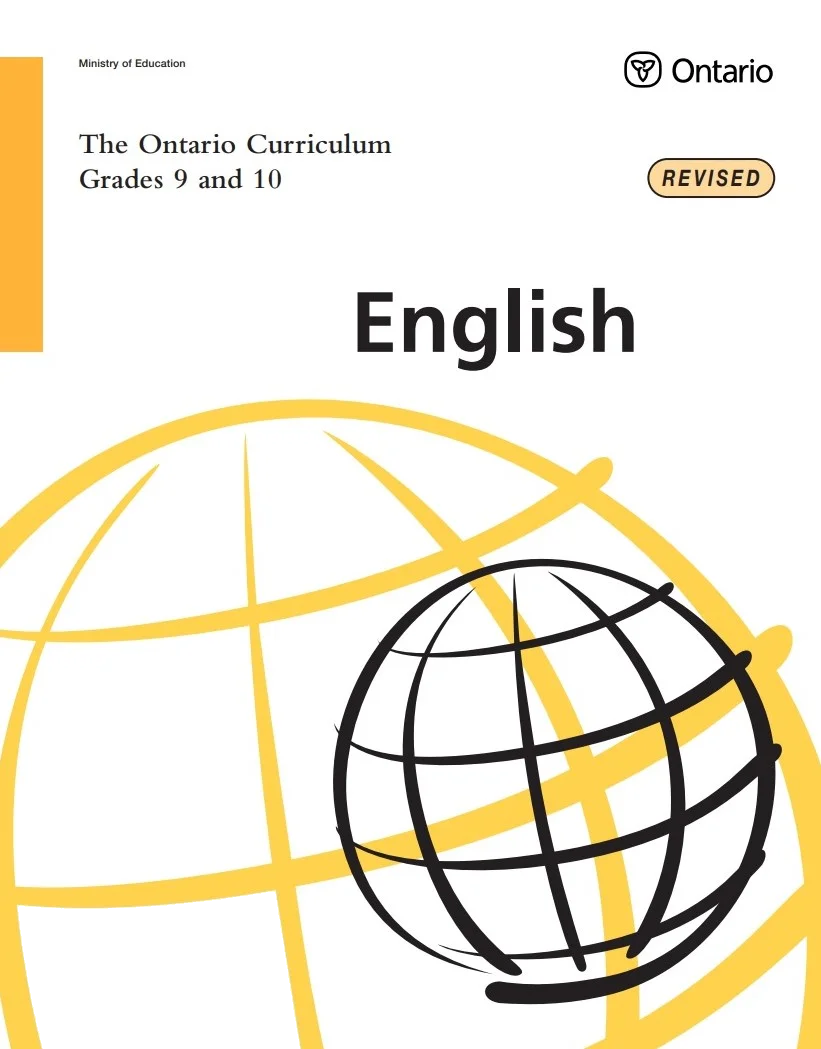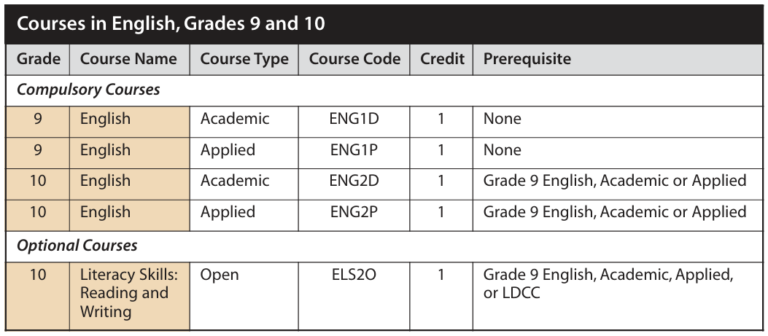Grade 10 English
Overview of Grade 10 English
Overview Grade 10 English Academic (ENG2D)
Grade 10 English aims to broaden students’ oral communication, reading, writing, and media literacy skills essential for success in their secondary school academic programs and daily lives. Students will analyze literary works from both contemporary and historical periods, interpret and evaluate informational and graphic texts, and create various forms of oral, written, and media texts. A key emphasis will be on selectively using strategies that enhance effective communication. This course is designed to prepare students for the mandatory Grade 11 English university or college preparation course.
Prerequisite: Grade 9 English (ENL1W)
Overview Grade 10 English Applied (ENG2P)
The Grade 10 English Applied course aims to expand the oral communication, reading, writing, and media literacy skills essential for students’ success in secondary school and everyday life. Students will engage with and produce various informational, literary, and graphic texts. The course emphasizes consolidating strategies and processes that aid in interpreting texts and communicating clearly and effectively. It is designed to prepare students for the mandatory Grade 11 college or workplace preparation course.
Prerequisite: Grade 9 English (ENL1W)
Source:
https://www.dcp.edu.gov.on.ca/en/curriculum/secondary-english
Ontario Curriculum Breakdown - Grade 10 English (Academic, Applied)

- Listening to Understand: listen in order to understand and respond appropriately in a variety of situations for a variety of purposes;
- Speaking to Communicate: use speaking skills and strategies appropriately to communicate with different audiences for a variety of purposes;
- Reflecting on Skills and Strategies: reflect on and identify their strengths as listeners and speakers, areas for improvement, and the strategies they found most helpful in oral communication situations.
- Reading for Meaning: read and demonstrate an understanding of a variety of literary, informational, and graphic texts, using a range of strategies to construct meaning;
- Understanding Form and Style: recognize a variety of text forms, text features, and stylistic elements and demonstrate understanding of how they help communicate meaning;
- Reading With Fluency: use knowledge of words and cueing systems to read fluently;
- Reflecting on Skills and Strategies: reflect on and identify their strengths as readers, areas for improvement, and the strategies they found most helpful before, during, and after reading.
- Developing and Organizing Content: generate, gather, and organize ideas and information to write for an intended purpose and audience;
- Using Knowledge of Form and Style: draft and revise their writing, using a variety of literary, informational, and graphic forms and stylistic elements appropriate for the purpose and audience;
- Applying Knowledge of Conventions: use editing, proofreading, and publishing skills and strategies, and knowledge of language conventions, to correct errors, refine expression, and present their work effectively;
- Reflecting on Skills and Strategies: reflect on and identify their strengths as writers, areas for improvement, and the strategies they found most helpful at different stages in the writing process.
- Understanding Media Texts: demonstrate an understanding of a variety of media texts;
- Understanding Media Forms, Conventions, and Techniques: identify some media forms and explain how the conventions and techniques associated with them are used to create meaning;
- Creating Media Texts: create a variety of media texts for different purposes and audiences, using appropriate forms, conventions, and techniques;
- Reflecting on Skills and Strategies: reflect on and identify their strengths as media interpreters and creators, areas for improvement, and the strategies they found most helpful in understanding and creating media texts.
York Region Tutoring Provides
If a student is approaching a forthcoming test, we can provide them with a previous test to be completed at home before their upcoming session. Subsequently, during their next class, just before the exam, they can review the test with their tutor. These tests are exclusively sourced from high schools in York Region and other areas in Ontario, serving as the definitive benchmark for students to assess their readiness.
York Region Tutors and are equipped with drawing tablets making collaboration simple, efficient and effective. We also offer drawing tablets at a discount for purchase to students who really take to the functionality of the product.
At the parents’ request, following each tutoring session, our tutors can assign homework tailored to address weaknesses and reinforce strengths in students. Additionally, we incorporate homework questions directly extracted from previous tests and quizzes administered by YRDSB school teachers, allowing students to familiarize themselves with potential test questions.


